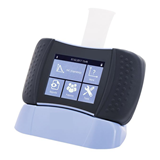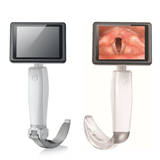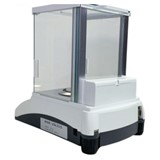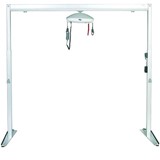Explore top aesthetic clinic design trends. Blend luxury with compliance and create client-focused interiors that grow your cosmetic practice.
Key takeaways
- Cosmetic fitout costs: Fitout costs for a cosmetic or aesthetic clinic in Australia generally range from $2,500 to $4,500 per square metre, depending on materials, compliance requirements, and location.
- Natural materials dominate: Use of timber, stone, and textured finishes create a calm, earthy appeal that patients associate with premium care.
- Lighting matters: Mood lighting, indirect LED strips, and circadian lighting systems are in demand to enhance both patient comfort and brand luxury.
- Compliance with function: Despite the aesthetic focus, all design choices must meet TGA, and building code compliance, especially in treatment and sterilisation areas.
- ROI potential: Clinics with premium interior fitouts experience 15–20% higher client retention, particularly when aligned with the brand’s service promise.
- Wellness integration: Biophilic design, aromatherapy ventilation, and spa-inspired lounges are trending to position cosmetic clinics as holistic wellness centres.
- Average build timeframe: Cosmetic clinic fitouts in Australia generally take 8–14 weeks, but expect up to 20 weeks with custom joinery or building permits.
- Sustainability appeal: More clients are influenced by a clinic’s green credentials, making sustainable materials, VOC-free paints, and energy efficiency valuable selling points.
Introduction
Today’s aesthetic patients don’t just want results — they want an experience. In Australia’s booming cosmetic and aesthetic services industry, design is becoming as critical as clinical expertise. Clinics are now judged not only on treatment outcomes, but on the atmosphere, materials, and visual experience they provide from reception to recovery.
In this guide, we’ll explore the latest fitout design trends shaping cosmetic and aesthetic clinics across Australia — and how to blend luxury with regulatory function. Whether you're building a boutique clinic or rebranding an existing space, this guide will help you make informed, compliant, and customer-focused design choices that attract high-value clients.
The Australian market context for cosmetic clinic fitouts
- The Australian cosmetic procedure industry was valued at over $1.4 billion in 2023 (Statista).
- Non-surgical treatments account for more than 70% of clinic revenue.
- New clinic openings are forecast to grow by 6.5% annually through 2027 (IBISWorld).
Fitouts are a strategic investment. From luxury flooring to layout design, every square metre influences patient perception, staff efficiency and brand positioning.
Modern design trends for aesthetic clinics in Australia
Natural luxury: The power of materials
Natural finishes help ground clients in comfort. They add premium value to your clinic’s look and feel.
- Timber and veneer finishes: Bring warmth to cabinetry and reception desks.
- Marble or stone benchtops: Signal luxury while maintaining cleanliness.
- Textured feature walls: Acoustic panels, fluted timber, or wallpaper add character.
- Neutral colour palettes: Creams, soft greys, and sand tones feel calm and welcoming.
Mood lighting and functional illumination
Lighting directly affects patient perception, staff workflow, and energy efficiency.
- Reception and waiting areas:
- Pendant lights with soft colour temperatures (2700K–3000K)
- LED strip lighting for under-bench and ceiling cove applications
- Treatment rooms:
- Bright, dimmable task lighting (4000K–5000K)
- Anti-glare ceiling downlights
- Feature lighting:
- Backlit mirrors in consult rooms
- Illuminated signage for branding
Smart lighting systems allow daylight replication and mood transitions from consultation to treatment, enhancing client comfort.
Biophilic and wellness-driven design
Modern aesthetic clinics are borrowing from spa and wellness design principles.
- Indoor greenery: Wall-mounted planters or indoor palms soften the environment.
- Natural light access: Skylights or frosted windows support emotional wellbeing.
- Aromatherapy integration: Low-level essential oil diffusers in waiting areas
- Soundscapes: White noise or gentle ambient music supports relaxation
Layout design: Function-driven flow
Zoning the clinic
A well-designed cosmetic clinic separates public, semi-private, and private spaces.
- Front of house:
- Reception and waiting area
- Retail product display
- Accessible public toilets
- Clinical spaces:
- Consultation rooms
- Procedure rooms (with TGA-compliant flooring and storage)
- Recovery or quiet rooms
- Back of house:
- Sterilisation rooms
- Staff break area
- Storage and stockroom access
Staff efficiency
- Direct lines between consult and treatment rooms
- Acoustic separation between spaces
- Integrated data and power access for devices
Technology integration in fitouts
Digital convenience is now a must for modern aesthetic clients.
- Touchless check-in kiosks
- LED video walls for treatment explainers or branding
- Wi-Fi-enabled treatment equipment and adjustable ergonomic chairs
- App-based lighting and music controls for rooms
Compliance and accreditation: Function beyond form
All design elements must comply with:
- Australian Building Code (BCA)
- TGA regulations for any medical-grade rooms
- NSW/QLD/VIC healthcare facility planning guidelines (as applicable)
- AS/NZS 4187 for sterilisation areas (if applicable)
- Accessibility (DDA) standards for entrances, toilets and corridors
Consulting a healthcare architect or builder experienced with cosmetic fitouts is essential.
Budget planning: Fitout costs
When planning your cosmetic clinic fitout in Australia, it’s important to understand the cost breakdown per square metre:
- Base building and flooring typically range from $700 to $1,000 per sqm, covering foundational works and durable surface finishes.
- Custom joinery and cabinetry, including reception desks, consult room storage, and retail displays, can cost between $1,000 and $1,500 per sqm depending on material and detail complexity.
- Clinical-grade fitout and plumbing, which covers sinks, sterile areas, and compliant materials, also sit around $1,000 to $1,500 per sqm due to hygiene and safety requirements.
- Lighting and electrical work, including ambient lighting, task lighting, and power/data points, is generally $400 to $600 per sqm.
- Branding and signage for internal and external visibility, such as illuminated signs or wall graphics, adds another $100 to $300 per sqm.
Altogether, you should expect a total investment of approximately $2,500 to $4,500 per square metre, depending on your design preferences, compliance scope, and the level of customisation.
In terms of project duration, most cosmetic clinic fitouts require around 8 to 14 weeks. However, if your build includes complex joinery, bespoke materials, or requires additional council approvals, allow for up to 16 to 20 weeks to completion.
Hidden costs to plan for
- Council DA/CDC approvals (up to $10,000)
- Fire safety upgrades
- IT/network cabling
- Waste management and medical waste fitout
- Acoustic compliance in urban zones
Designing for client experience: Key touchpoints to include
Creating a premium patient experience doesn’t begin in the treatment room — it starts the moment someone walks through your clinic doors. A well-considered fitout can boost client satisfaction, retention, and referral rates by creating a seamless, relaxing, and confidence-inspiring environment.
Here’s how to design around the modern aesthetic client journey:
- Reception and entry
- Create an immediate sense of calm with natural light, ambient music, biophilic elements (plants or textures), and a scent diffuser. Consider providing a welcome station with aromatherapy, herbal teas or infused water.
- Consultation rooms
- Use soft, flattering lighting and acoustic insulation for private conversations. Incorporate backlit mirrors, ergonomic seating, and secure digital displays for treatment visuals.
- Treatment spaces
- Prioritise comfort and cleanliness. Include adjustable chairs, calming wall finishes, and mood-controllable lighting. Ensure clinical-grade surfaces meet TGA compliance without feeling sterile.
- Post-treatment or recovery areas
- Provide semi-private spaces with lounge chairs, warm towels, and phone charging stations. This enhances the post-procedure experience and encourages clients to linger, increasing satisfaction.
- Retail product displays
- Integrate retail organically into waiting areas with subtle shelving, halo lighting, and informative signage. Upselling is more effective in an environment that feels curated, not commercial.
Sustainability and low-VOC fitouts
Eco-conscious design is a growing differentiator for Australian clinics.
- Use low-VOC paints and sealants to reduce toxic exposure
- Select recycled or rapidly renewable materials (bamboo, FSC timber)
- Include energy-efficient HVAC systems and lighting
- Install motion sensors for water and lighting
Practical tips for your cosmetic clinic fitout
- Engage a healthcare interior designer early to avoid layout rework
- Invest in high-impact areas first: reception, consult rooms, recovery
- Create a consistent brand aesthetic across physical and digital channels
- Allow for scalable fitout plans if you plan to expand in the future
Frequently asked questions
What is the average cost to fit out a cosmetic clinic in Australia?
Depending on quality, location, and compliance needs, expect $2,500 to $4,500 per sqm. A 100 sqm clinic may cost between $250,000 to $450,000.
Do I need council or medical approvals for a cosmetic clinic fitout?
Yes. Most fitouts require a CDC (Complying Development Certificate) or DA (Development Application) depending on your lease, zoning, and changes made. Check local council regulations.
What is the most important room to prioritise in design?
Reception and consultation rooms often influence client retention the most. However, treatment rooms must be clinically compliant and ergonomically designed for staff use.
How long does a cosmetic fitout take?
Allow 8 to 14 weeks minimum. Add time for design, council approvals, and any permit delays. Custom joinery or change-of-use applications can add 4–6 weeks.
Can I use residential-style materials?
Only in non-clinical zones. Clinical areas require wipeable, sealed, hygienic surfaces that meet infection control guidelines.
Are there finance options for cosmetic clinic fitouts?
Yes. You can apply for:
- Fitout finance packages (3–7 year terms)
- Equipment leasing (separate from construction)
- Asset finance from commercial lenders
Final thoughts
Aesthetic clinics in Australia are evolving into luxury wellness environments that combine cutting-edge treatments with immersive, calming design. Successful fitouts in 2025 strike a balance between visually engaging, comfort-driven design and regulatory functionality.
Investing in natural materials, intelligent lighting, and streamlined zoning doesn’t just impress — it drives long-term business growth through client satisfaction, brand loyalty, and operational efficiency.
If you're planning a new cosmetic clinic or revamping your current space, make design a strategic priority — because in aesthetics, first impressions count as much as final results.








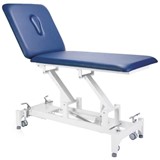

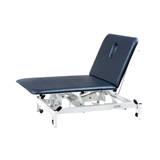

-160x160-state_article-rel-cat.png)

